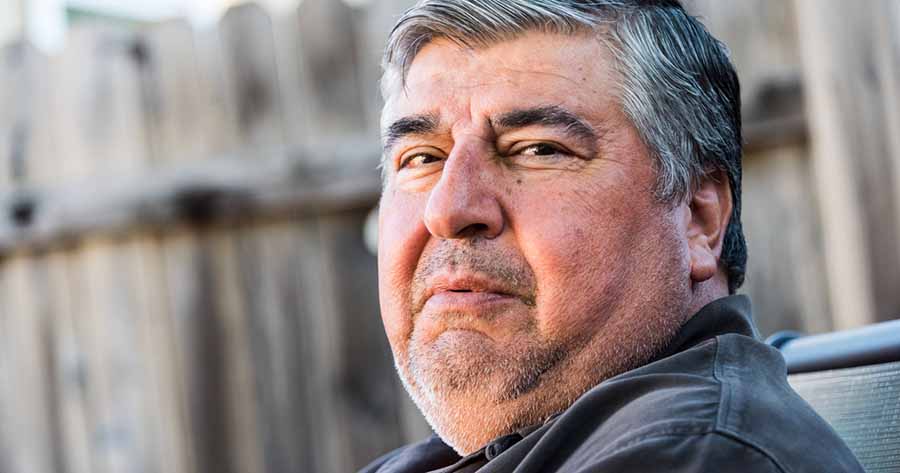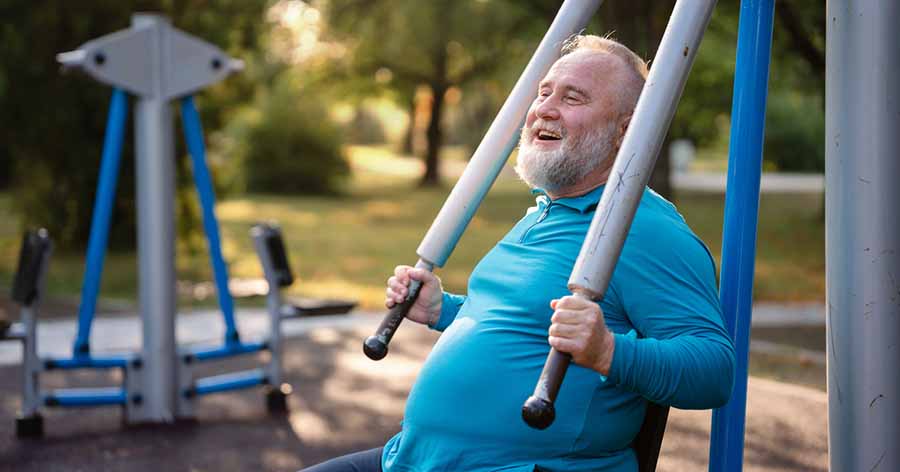To avoid devastating long-term health complications from diabetes the Diabetes Control and Complications Trial ([DCCT]; DCCT Research Group, 1993) has demonstrated that an HbA1c of under 6.05 % should be maintained in people with type 1 diabetes; this level of control is not safely achievable in younger children (DCCT Research Group, 1994), because if the child has too low an HbA1c or too tight a control he/she can get cognitive damage from repeated severe hypoglycaemia, and loss of consciousness. Therefore, an HbA1c of 7.5% is recommended by the International Diabetes Federation (1999), the International Society for Pediatric and Adolescent Diabetes (2000) and the National Institute for Health and Clinical Excellence (2004). The 1989 St Vincent Declaration introduced targets for diabetes care (Raz et al, 2004) yet, by 2002, ‘most multicentre studies demonstrate[d] that the outcome of diabetes therapy falls below the targets set’ (Holl and Grabert, 2002).
The fourth National Paediatric Diabetes Audit showed that over 80 % of UK children are failing to achieve target HbA1c (Diabetes UK, 2004; Diabetes UK, 2005; Edge et al, 2005), yet, according to Holl and Grabert (2002), ‘it is possible to achieve excellent metabolic control in the majority of paediatric patients’.
It is imperative, for maintaining their future health, that children are offered suitable means of achieving target HbA1c. However, HbA1c alone is not proof of good control – it can reflect many highs and lows, thus creating susceptibility to life-threatening severe hypoglycaemia (SH), diabetic ketoacidosis (DKA), poor quality of life and long-term complications (such as microangiopathy, nephropathy and neuropathy).
Can insulin pump therapy produce better glycaemic control?
Does using continuous subcutaneous insulin infusion (CSII) therapy, ‘the best tool available’ for ‘consistent, responsive and precise delivery of insulin’ (Walsh and Roberts, 2000), produce the ‘best consistent glycaemic control’ (Pickup, 2003)?
To answer this question research evidence, such as the ‘gold standard’ randomised controlled trials and expert clinical opinions, should be critically analysed (Freshwater and Rolfe, 2004; Sackett et al, 1996). Herman (2002) makes the point that as clinical trials focus on hard end points, such as HbA1c levels, ‘patient preferences and quality of life’ may be missed. However, when this knowledge is integrated with ‘available resources and patients views’ it constitutes evidence-based health care (Thompson, 1998), which is used via evidence-based decision-making to improve patients’ health (Gray, 2001) and comply with the standards of the National Service Framework for diabetes (Department of Health, 2001).
For this article internet literature searches were performed, and expert and patient opinions sought, elucidating key issues of control (such as DKA, HbA1c, SH and quality of life), which were considered in the effectiveness of CSII therapy in the care of children and adolescents with diabetes.
The evidence
According to Weintrob and colleagues (2004), evidence proves that CSII is more effective at controlling blood glucose levels than multiple daily injections (MDI) in adults but less evidence exists for children. Could this be a reason for children rarely being considered for CSII therapy in the UK, although, internationally, children have used it for over 20 years (Hanas, 2002)? Lowes (2005) believes not, she said that:
‘The effectiveness of insulin pump therapy in reducing glycosylated haemoglobin and hypoglycaemic events in young children with type 1 diabetes has been well documented.’
Following my literature search I agree with her, even though many studies are from countries outside the UK, where CSII use is more common. While these results are likely to be valid, they may not currently be replicable in the UK, due to insufficient professional experience and training.
Gray (2001) recommends conducting a meta-analysis in order to identify ‘beneficial and adverse effects of treatment’; Weissberg-Benchell and colleagues’ (2003) meta-analysis of 52 studies concluded that CSII improved glycaemic control in adults and children, children showing the greater improvement. However, the studies analysed dated from 1979 to 2001 and technology has since improved – results using ‘modern tools’ may differ.
Neonates
There have been no trials in neonates, but successful usage with ‘minimal complications’ has been reported in the USA (Wintergast et al, 2004) and UK (personal communication with Fiona Campbell, Consultant Paediatric Diabetologist, Leeds).
Toddlers
Most studies of toddlers, a group with specific developmental problems affecting control, showed that CSII reduced HbA1c and SH, improved their parents’ confidence, enabled parents to work while the child was in day-care, improved quality of life and substantially reduced parent–hospital contact (Ahern et al, 2002; Kaufman et al, 2001; Litton et al, 2002; Shehadeh et al, 2004). However, some study sizes were small, some were conducted for short time periods and patient selection was not random so they may not have been representative, or ‘unsuitable’ children may have been excluded. Shehadeh and colleagues state that HbA1c was significantly lowered by 0.05%; I would not consider this to be clinically significant.
Weinzimer and colleagues’ follow-up study (2004) reported improvement using CSII was ‘durable and effective’ for 4 years after their study. However, a randomised trial, with similar participant characteristics at baseline, did not support these outcomes (Fox et al, 2005), possibly because the children studied had a low HbA1c before starting CSII, some were in remission, the MDI group did not use the most modern long-acting insulin, and only 22 children completed the trial, which lasted for 6 months – too few participants and too short a time period to reach significant conclusions for factors such as good glycaemic control. Weintrob and colleagues (2004) recommend that such study’s should last for a minimum of 1 year to achieve valid results. In contrast, Ahern and colleagues’ (2002) work, although not randomised, studied a larger group: 161 children (aged 18 months to 18 years) for an average of 32 months. Average HbA1c levels were reduced and maintained to the end of the study.
Children
Pankowska and colleagues’ 2-year clinical trial (2003) in under-10-year olds, which compared CSII-since-diagnosis with MDI-from-diagnosis changing to CSII for the study, found both groups significantly reduced and maintained HbA1c, but the CSII-since-diagnosis group fared better. Only the MDI group had adverse events (SH, DKA and site infections). This study had more children than many studies, was conducted over 2 years, average baseline HbA1c was similar (8.7%) and the results showed both MDI and CSII could improve control.
Adolescents
For adolescents, whose specific pubertal-related problems (such as growth spurts, hormonal changes and social pressures) make it difficult to achieve consistent glycaemic control (Greene, 2001), quality of life becomes more important than control, yet this is precisely when poor control leads to complications. A psychosocial study (Low et al, 2005) on adolescents using CSII reported improvements in control:
‘Teens [did] however, report high levels of satisfaction with pump therapy and increased adolescent responsibility for the diabetes regimen.’
Finally, a UK-based clinical audit of 40 mixed-age patients, including young children, concluded that HbA1c, SH and DKA were reduced substantially when CSII was used (Rodrigues et al, 2005).
Expert UK professional opinion
A UK paediatric diabetes expert, when asked his opinion regarding CSII and MDI for children, wrote:
‘In my experience the majority of children who go onto MDI, especially the adolescents, do very much worse! I also have the figures for this. In my opinion MDI should not be started for older children with poor control!’ (Bill Lamb, Paediatric Diabetologist, County Durham, personal communication, 2005).
Doyle and colleagues’ (2004) randomised controlled trial, although of short duration and with only 32 children, is important and relevant to current practice as it is the first to analyse a modern insulin in both CSII and MDI groups. MDI users showed little change while CSII users progressed well; however, they had slightly longer training and the trial was part-funded by pharmaceutical and pump companies and the authors declared professional interests.
Expert USA-based physician’s opinion
Edelman (2000), an American physician specialising in diabetes, summarised his experience thus:
‘The truth of the matter is that the proper use of insulin pumps allows less work and fewer hassles for the caregiver in the long term. From a patient’s point of view insulin pump therapy has proved to be beneficial in many aspects, including a much more flexible lifestyle while simultaneously enjoying improved glucose control.’
Patient opinion
INPUT (promoting INsulin PUmp Therapy) founding member John Davis, who uses CSII himself, stated that approximately 350 children used pumps in the UK before the implementation of NICE guidelines in 2003, although this number has increased since (to, by the author’s estimate, 600, although this is being assessed at present). He has received a great deal of positive feedback over the years from children and their parents regarding the advantages of using CSII, such as the following.
- Better quality of life for the child and entire family, making the child nearly ‘normal’ again.
- A reduction in the child’s mood swings caused by swinging blood sugars.
- Doing away with ‘force-feeding’ of snacks even when the child is not hungry.
- Adolescents being able to sleep-in at the weekend and go out late with their peers, eat at the times their peers eat or when they are hungry, and not eat to the clock as with injections.
- Fewer school problems as the child is often more able to self-manage and not need to inject when at school.
- Better glycaemic control.
- Less nocturnal hypoglycaemia and less SH, which has been a very important and noticeable improvement for some children; children who have a tendency to SH should be considered as ideal candidates for pumps – Pickup and colleagues (2005) have recently shown CSII to be instrumental in reducing SH and call for NICE guidelines to be amended to reflect this.
- It increases the child’s confidence and responsibility, giving them ownership of their condition and treatment in a way that injections do not.
In addition, all the children that accessed pumps via INPUT bar one, a girl who did not like being attached to a pump, continued to use CSII after the initial trial.
However, INPUT is still receiving enquiries asking for help to access pumps for children who appear to fulfil the criteria for CSII, which begs the question, have all eligible children been offered the opportunity to try CSII and if not why not?
A model for change
If the evidence is appropriate and shows CSII can safely improve glycaemic control in children this comprises phase 1 of Beckhard and Harris’ (Beckhard and Harris, 1987) model for change; is change needed? Yes, 80 % of children have poor control. However, change in practice is difficult to accomplish (Hibble et al, 1998) and involves a ‘wide range of stakeholders’ including patients, medical, nursing and management staff (Simpson, 2000): Gray (2001) therefore recommends the process be managed and co-ordinated through clinical governance, involving both clinicians and management.
Phase 2 is goal setting; what should changed practice achieve? Better glycaemic control.
Current practices are studied in phase 3, which must include the all-important area of child, adolescent and family education, including diet training, carbohydrate counting, insulin adjustments and pump use.
In the past (2002), my son mentioned to me how noticeable it was on a Diabetes UK holiday that those children on pumps (2 of them that year, more in 2005!) were able to count carbohydrates, use their blood glucose readings and adjust their insulin, whereas the children on injections did their blood glucose test and wrote the reading in their book, then just injected the same amount every day. When he asked some of the children why, he realised they did not ‘action’ the test results – even at home, the results were written for the nurse.
Phase 4 considers what needs changing and how to do it, consulting management and clinical experts and also patients. Clinical ignorance may mean patients are uninformed, unaware of treatment options and consequences of poor control, so cannot make valid choices; the hospital may not have adequately trained staff or staff practising evidence-based health care. There may also be resource issues that require attention, including availability of appropriate current training for staff, sufficient staff for educating and managing the caseload; Diabetes UK’s 2005 Dr Foster survey has found a shortage of paediatric diabetes nurses and many of those nurses having too large a caseload. Financial resources should not be a stumbling block, as the provision of pumps is covered by the NICE guidelines (2003; 2004); however, there may still be a few authorities that, not fully appreciating that guidelines are not optional, have not implemented the NICE guidelines, so this would need resolving at a local level.
Finally, an implementation plan including all the needs and information from phases 1 to 4 should be devised and implemented in phase 5: following implementation, an evaluation should be carried out to review progress.
The knowledge–practice gap
In conclusion, research, although not scientifically perfect, has demonstrated that CSII can improve a child’s blood glucose control, reduce adverse events and improve quality of life. Experienced expert practitioners and patients support this, yet there remains ‘a gap between the results of randomised, blinded clinical studies and the practical use of the treatments in the usual clinical setting’ (Lockett, 1997). In addition, there needs to be resources invested in paediatric nurses, reducing caseloads, training for the trainers and ongoing life-long education for children and their families, not just for pump use, but to equip and self-empower all children with diabetes and their families to eventually be able to self-manage what is a long-term chronic condition as well as they can.
To quote the National Paediatric Audit findings (Diabetes UK, 2004):
‘Analysis has shown that paediatric diabetes care currently does not meet nationally agreed standards and this will continue to cause health problems for children with diabetes now and in the future’.
The Research and development strategy for the NHS (DoH, 1991) stated that research and development was to become ‘an integral part of health care’ and noted that ‘in some instances the relevant knowledge is available but is not being used’; today, 15 years later, this still appears the case for many children with diabetes in the UK, although a growing minority of diabetes experts believe that:
‘if insulin pumps improve parental coping and family quality of life and can achieve optimal glycaemic control over time, they should be considered and made more readily available for children with diabetes.’ (Lowes, 2005)
This was recommended by Torrance and colleagues (2003) as part of the ‘management strategy offered in the UK’.





Charity publishes its 10-year vision to transform diabetes prevention, care and treatment.
22 May 2025